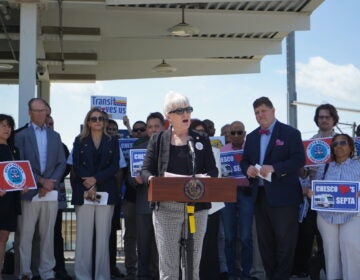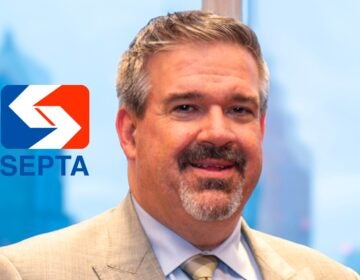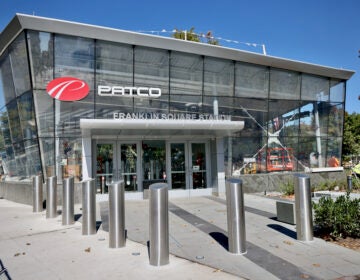Six months later, what has been done to prevent another Amtrak 188?
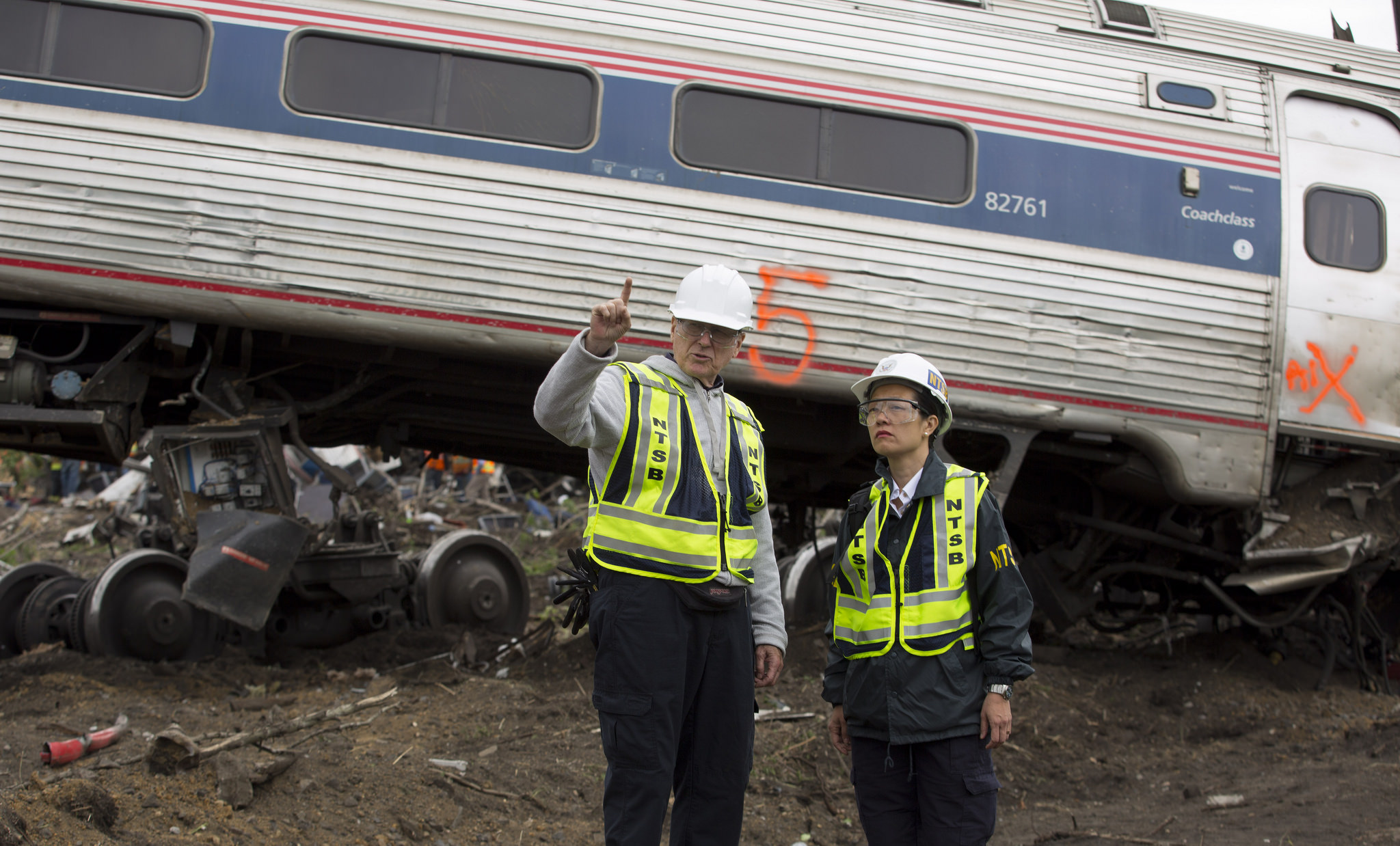
Thursday marks six months since Amtrak passenger train no. 188 derailed, killing eight passengers and seriously injuring more than 200.
As it approached the Frankford Junction curve in North Philadelphia, Amtrak 188 was going 106 mph, more than double the 50 mph speed restriction. The “turnover speed” for that curve is 98 mph.
As the train entered the turn, its engineer, Brandon Bostian, realized how dangerously fast it was going and hit the emergency brake.
He was too late. The train jumped off the tracks going 102 mph.
While the National Transportation Safety Board is not expected to release a final report explaining what caused the accident until next May, all signs so far point to excess speed.
Six months later, PlanPhilly looks at what’s been done in the region to prevent another tragedy like Amtrak 188.
TOO FAST
It’s still unknown why Amtrak 188 was speeding. The train’s brakes were properly functioning, but the NTSB has not ruled out some other malfunction. Human error remains a likely culprit. NTSB investigators concluded that Bostian was not using his cellphone at the time of the crash, but that doesn’t mean he didn’t make a costly mistake.
Before the Amtrak 188 crash, Amtrak engineers were expected to memorize routes, recalling when to speed up and slow down. There were few speed restriction signs.
Something as trivial as slipping up the number of turns counted could lead an engineer like Bostian to think he had already passed Frankford Junction, the last curve before a long straightaway with 110 mph speed limits.
We don’t know why Amtrak 188 was speeding, but we do know that Positive Train Control, a safety system mandated by Congress, would have prevented it.
On the southbound side of the Frankford Junction, an older safety system, Automatic Train Control, “enforces” – automatically brakes – trains travelling above 45 miles per hour. At the time of the accident, the northbound side did not have ATC enforcement in place.
Congress required forty-one intercity commuter and freight railroads to implement PTC in the Rail Safety Improvement Act of 2008. Originally, Congress gave a December 31, 2015 deadline. But as of August, only two rail operators – SEPTA and Los Angeles’ Metrolink – were on pace to make that deadline, leading Congress to extend it recently by three-to-five years.
Both ATC and PTC warn train engineers when they are speeding and automatically brake trains if the engineer does not respond to the alarms. PTC is essentially an upgraded version of ATC that will enable railroads to enforce speed restrictions all along their lines, whereas ATC was generally used only when trains entered curves from high-speed areas and entering stations.
PTC essentially prevents crashes caused by human error, but miscommunications and other operator mistakes only account for about 35 percent of train crashes, which are exceedingly rare to begin with. For example, PTC wouldn’t have prevented the 11-car CSX freight train derailment in South Philly in 2014, or the derailment over the Schuylkill River in 2013. Both of those were caused by defects with the tracks themselves.
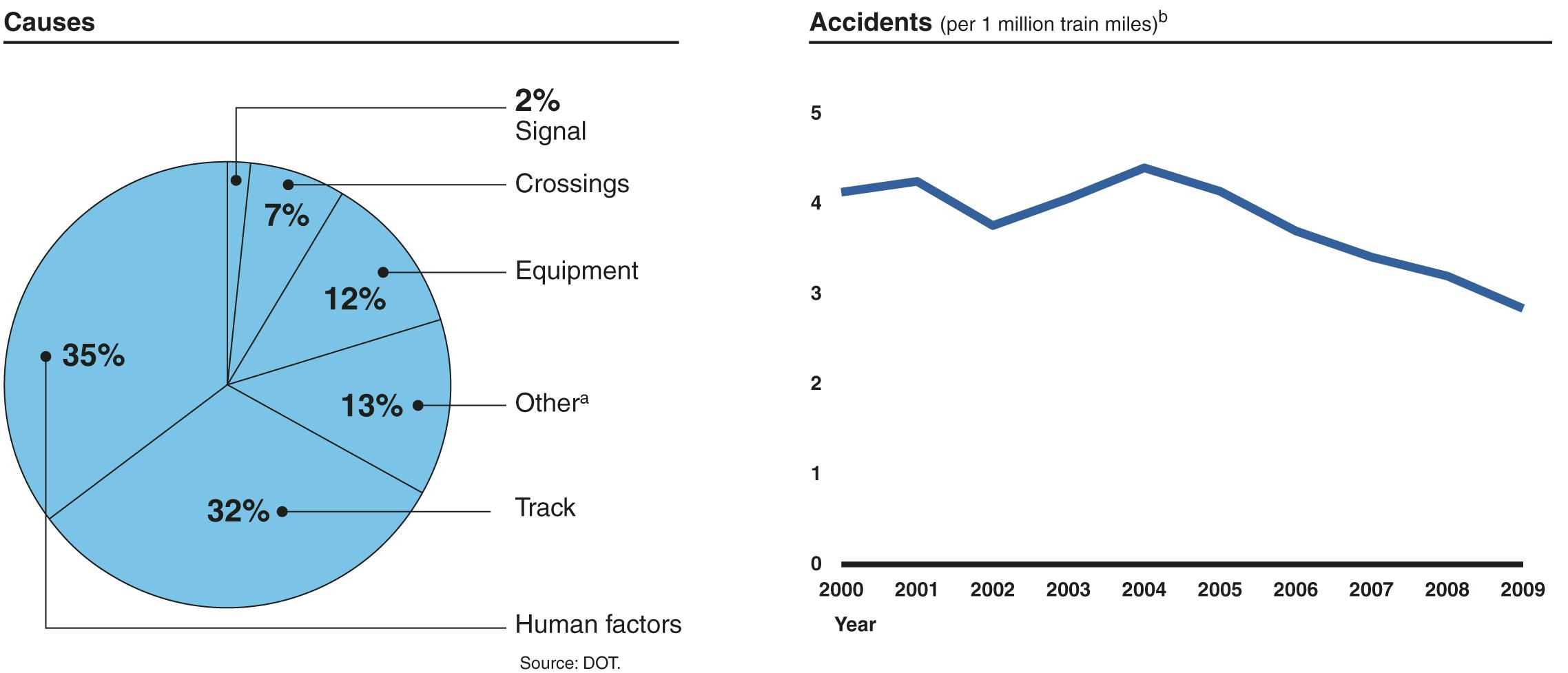
Freight companies own most of the railroad tracks in the United States. Amtrak itself only owns 3 percent of the lines it uses – it leases the rest from commuter and freight lines. According to the Association of American Railroads, a freight rail industry trade group, freight companies have nearly $6 billion implementing PTC and expect to spend another $4 billion more. A Congressional Research Service report in 2012 estimated that full PTC implementation will cost $14 billion.
In the Greater Philadelphia region, Amtrak, SEPTA, NJ Transit, CSX and Norfolk Southern all fall under the Congressional mandate to install PTC. Only intercity and commuter lines, like the Regional Rail lines, are affected by the mandate. Trolleys, subways and light rail like PATCO or the Norristown High Speed Line are not required to have PTC, although PATCO does use ATC.
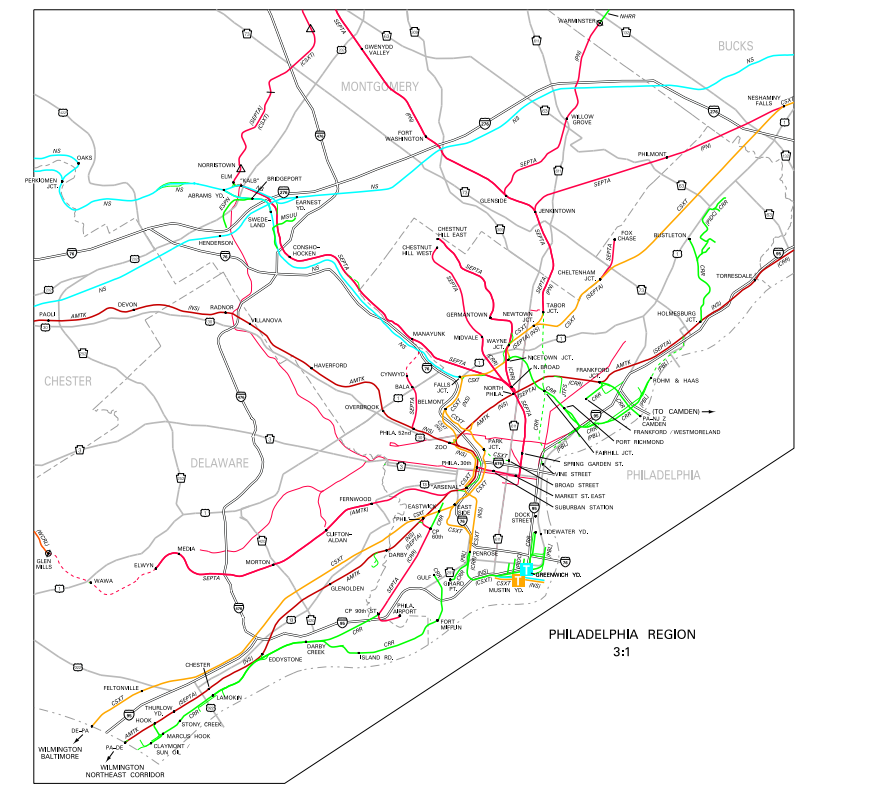
PROGRESS ON PTC AND OTHER SAFETY MEASURES SINCE
According to spokesman Craig Schulz, Amtrak is on pace to “activate Positive Train Control on the Amtrak-owned sections of the Northeast Corridor between Washington and Boston by December 31, 2015.”
Amtrak does not own two sections of the 456-mile Northeast Corridor: the Metro North Railroad owns 56 miles between New Rochelle, N.Y. and New Haven, CT and Massachusetts Bay Transit Authority owns the 38 miles in that state. According to an FRA report released in August, Metro-North expects to have PTC activated sometime in 2016.
A 2013 Metro-North derailment that killed four could have also been prevented by PTC. There, the sleep-deprived engineer fell asleep and failed to slow the train heading into a curve.
Amtrak has installed PTC on the MBTA-owned tracks on the Northeast Corridor.
Amtrak will also install PTC on the Keystone Corridor between Philadelphia and Harrisburg by the end of this year. Other Amtrak-owned lines won’t see PTC until 2018.
Schulz told PlanPhilly that Amtrak had spent $110.7 million on PTC since 2008. That figure is the same reported back in May following the Amtrak 188 derailment. Progressive Railroading has reported that Amtrak will spend about $155 million, total.
That number is less than SEPTA plans to spend, but SEPTA has had to install both ATC – which was already in place along most of Amtrak’s lines – and the upgrades required to make a PTC system.
In addition to PTC, Amtrak added automatic enforcement to the northbound side of the Frankford Junction immediately following the Amtrak 188 derailment.
The Federal Railroad Administration also ordered Amtrak to implement similar enforcement at curves on the Northeast Corridor “where there is a significant reduction (more than 20 mph) in the authorized passenger train approach speed,” and to post more speed limit signs, with “particular emphasis” on curve locations.
SEPTA will spend $330 million in total installing PTC and still says it will reach the original yearend deadline. In a statement, SEPTA General Manager Jeff Knueppel said the extended deadline will simply allow the transit authority a bit more time to “remedy technical issues that may arise during testing.” SEPTA officials have said that they put off other capital improvements in order to meet the initial deadline.
Partly due to the PTC mandate, SEPTA built new tracks along its West Trenton regional rail line, so the transportation authority would no longer need to lease tracks from CSX.
SEPTA still leases some regional rail tracks though: parts of the Thorndale/Paoli, Trenton and Newark/Wilmington lines are owned by Amtrak. As owner, Amtrak is responsible for implementing PTC equipment along the lines, whereas SEPTA maintains responsibility for installing equipement on the locomotives.
NJ Transit “is fully committed to meeting” the extended 2018 deadline to implement PTC, spokeswoman Jennifer Nelson said in an email. The regional rail operator is currently installing transponder equipment and testing prototypes. NJ Transit expects to spend $225 million total.
Switching to freight, CSX is currently testing its PTC systems. According to spokesman Rob Doolittle, CSX has spent $1.4 billion so far installing PTC equipment along nearly 5,000 miles of track (out of 15,000 miles total) and on 2,837 locomotives. The company expects to spent $1.9 billion when it finishes installing PTC.
Freight railroads are only legally required to install PTC on lines that it shares with commuter rails and lines that carry “Poisonous-Inhalation Hazards”. According to Doolittle, CSX expects to have “all of the necessary PTC technology deployed across the 15,000 miles where it is required on the CSX network by the end of 2018, “ and, “following additional testing and training… fully operational in 2020.”
Following the PTC extension, Norfolk Southern issued a press release stating that the company was revoking a previously issued cessation of service for Poisonous-Inhalation-Hazard commodities and for passenger trains using its lines.
According to the August FRA report, Norfolk Southern had yet to fully equip any of its 3,400 locomotives with PTC technology. The company has not stated affirmatively whether it will make the new extended deadline. When asked about the company’s progress, company spokesman Dave Pidgeon responded via email by forwarding a letter written in September that advocated for the deadline extension. The same email linked to the press release, before concluding: “That’s as much as we’re going to say for now.”
Conrail, which also controls some freight rails lines in the region, is a jointly-held subsidiary of CSX and Norfolk Southern. PTC implementation on Conrail will depend on the outfitting of CSX and Nortfolk Southern locomotives with PTC technology.
WHYY is your source for fact-based, in-depth journalism and information. As a nonprofit organization, we rely on financial support from readers like you. Please give today.




